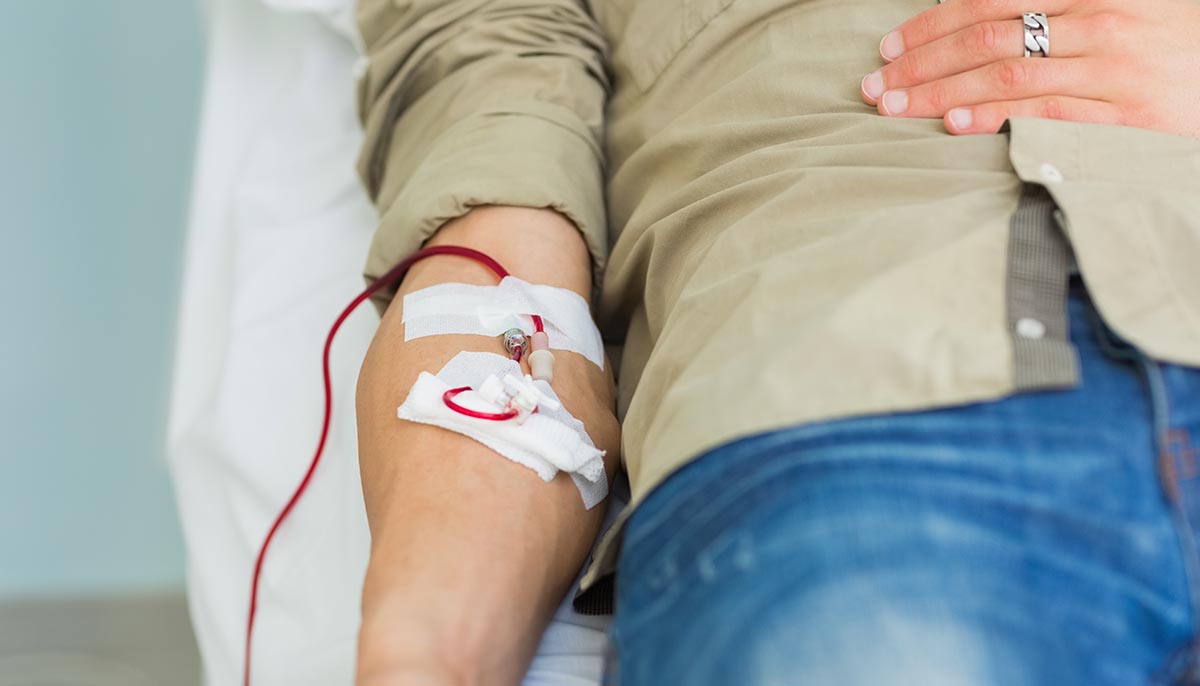Shutterstock
FDA Eases Gay Blood Donor Restrictions Amid ‘urgent need’; Six Month Old Baby Survives 50 Day Battle With Covid-19; and a Pink Supermoon is Coming Next Week.

On Thursday the Food and Drug Administration significantly eased restrictions on the blood donor guidelines for gay men. The donation deferral period for gay men after they’ve had intercourse has been reduced from 12 months to three.
The restrictions on blood donations from gay male donors date back to 1983. This was during the height of the AIDS crisis, and a lifetime ban on blood donations from gay men was instituted by the federal government.
This rule was replaced in 2015 with the year-long abstinence requirement. Surgeon General Jerome Adams explained the most recent changes:
“These changes are based on the best science that we have today regarding the time that it takes to test positive for HIV.” Adams is hopeful that the updated guidance will encourage people to “do the right thing: donate blood.”
U.S. Sen. Tammy Baldwin, D-Wis., believes that there is “still more work to be done.”
“The administration needs to change their blood donation policies to be based on individual risk so that all healthy gay and bisexual men are able to donate,” she said in a statement that was shared with NBC News.
“This is more important than ever as we continue working to address the COVID-19 pandemic and help save lives.”
A similar statement was issued from The Human Rights Campaign by Alphonso David, the organization’s president:
“While this change by the FDA is a step in the right direction, it still bases itself in bias rather than science. Creating policy based on identity as opposed to risk is irrational and given the current COVID-19 crisis, it is more critical than ever to prioritize science and facts over fear and bias.”
Related: FDA Issues Warnings over ‘Young Blood’ Anti-Aging Treatments
An adorable six-month-old baby boy quickly became a symbol of hope in Italy, where he was born. This is because he spent 50 days battling coronavirus—and won.
That means little Leonardo spent almost a third of his short life trying to defeat his illness, and he has recently returned to his home in Corbetta in the northern Italian region of Lombardy.
He was called “the wonderful face of hope,” by mayor Marco Ballarini, and he thanked the child for helping to lift spirits throughout the region.

“Today we have a reason to smile and be happy, to feel like we are a part of a community,” said Ballarini. “Today, we look at the wonderful face of hope.”
“Corbetta welcomes home little Leonardo who has just been released from the hospital after defeating COVID-19. Thanks a lot, Leo, and thanks to your parents who never gave up. They brought summer to the hearts of all Corbetta citizens! Strength Corbetta!,” he continued.
The boy’s mother said to local media, “I was worried a lot, especially at night. I do not wish that on any mother.”
She knew that her baby was getting sick when his heart rate quickened and he developed a fever. Her husband’s colleague had recently been diagnosed with the virus, which fueled her concern.
Related: Man Exposes Pregnant Wife to COVID-19 in Maternity Ward
If you’re stuck at home during the coronavirus pandemic and you’re tired of staring at cellphones, why not look up into the sky instead for a rare treat?
Next week, we’ll have a “pink supermoon” overhead on April 7 at 10:35 pm EST. However, we do have a bit of bad news. The moon won’t actually be pink. The moon is named after a North American wildflower called “phlox subulata,” also known as “moss pink.”
Tania de Sales Marques, an astronomer with the Royal Observatory, offered this advice about viewing the pink supermoon:
“The best thing to do is to wait until after the sun has set and the sky is dark. Find an unobstructed view of the sky and weather permitting, you should get to see a slightly brighter than usual full moon.”
“As if you’re thinking of taking a picture to mark the occasion, just be aware that you’ll need proper equipment, such as a camera with a long telephoto lens, as the moon captured on a cellular phone will look more like a blob.”